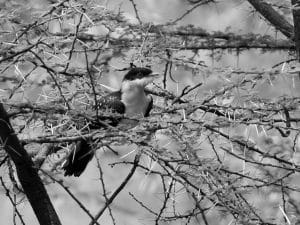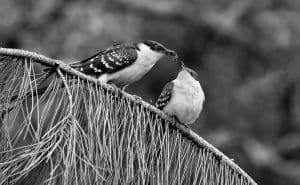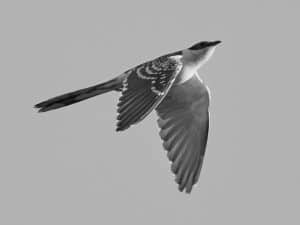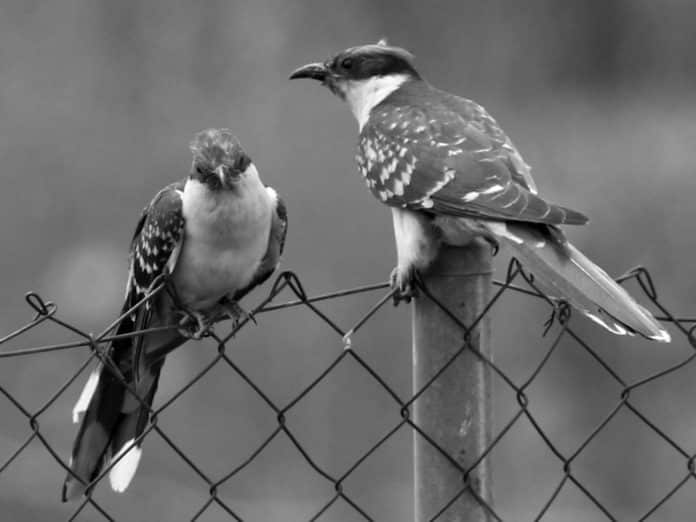Introduction to the Great Spotted Cuckoo in Tanzania
The Great Spotted Cuckoo is a fascinating bird species that can be found in Tanzania. With its unique features and interesting behavior, it is a delight for birdwatchers and nature enthusiasts. In this article, we will explore the migration patterns, behavior, preferred habitats, and conservation efforts related to the Great Spotted Cuckoo in Tanzania.
Unique Features and Physical Characteristics of the Great Spotted Cuckoo

The Great Spotted Cuckoo is a medium-sized bird with distinct physical characteristics. It has a slender body, measuring around 32 centimeters in length, and a wingspan of approximately 55 centimeters. The plumage of the Great Spotted Cuckoo is predominantly gray, with black and white patterns on its head, back, and wings. Its tail is long and broad, with black and white bars.
One of the most unique features of the Great Spotted Cuckoo is its curved beak, which is specially adapted for feeding on insects, caterpillars, and small reptiles. It also has a distinctive call, which is a repetitive, high-pitched “klee-klee-klee.” These features make the Great Spotted Cuckoo easily recognizable in the wild.
Migration Patterns of the Great Spotted Cuckoo in Tanzania
The Great Spotted Cuckoo is a migratory bird that travels long distances between its breeding and wintering grounds. In Tanzania, it is primarily seen during the months of September to April, when it migrates from its breeding grounds in Europe and Asia. It travels southwards to take advantage of the abundant food resources available in Tanzania during the winter months.
The migration patterns of the Great Spotted Cuckoo are influenced by various factors, including weather conditions, availability of food, and the need for suitable nesting habitats. It follows a well-established migratory route, flying over vast distances and crossing different countries. The journey can be perilous, as the birds face numerous challenges such as predation, exhaustion, and adverse weather conditions.
Behavior and Feeding Habits of the Great Spotted Cuckoo

The behavior of the Great Spotted Cuckoo is intriguing and unique. It is known for its brood parasitism behavior, where it lays its eggs in the nests of other bird species, particularly the Magpie and Carrion Crow. The host birds unknowingly incubate and raise the cuckoo’s chicks, often at the expense of their own offspring.
In terms of feeding habits, the Great Spotted Cuckoo primarily consumes insects, caterpillars, and small reptiles. It is an agile and opportunistic forager, often catching insects on the wing or searching for food on the ground. It has also been observed feeding on fruits and berries when insects are scarce.
Preferred Habitats and Nesting Habits of the Great Spotted Cuckoo
The Great Spotted Cuckoo prefers a variety of habitats in Tanzania, including woodland areas, open grasslands, and agricultural landscapes. It can often be found near water sources, such as rivers and lakes, where food is abundant. The presence of suitable nesting sites is also crucial for the species.
When it comes to nesting, the Great Spotted Cuckoo does not build its own nest. Instead, it relies on other bird species to provide a suitable nesting site. The female cuckoo carefully selects the host nest and lays her eggs there, mimicking the appearance of the host’s eggs to avoid detection. Once the eggs hatch, the host birds raise the cuckoo chicks as their own.
Conservation Efforts and Challenges for the Great Spotted Cuckoo in Tanzania
Despite being a migratory bird, the Great Spotted Cuckoo faces several conservation challenges in Tanzania. Habitat loss due to deforestation, agricultural expansion, and urbanization is a major threat to its survival. The destruction of nesting sites and the decline of suitable feeding habitats are also significant concerns.
Conservation efforts are underway to protect the Great Spotted Cuckoo and its habitat in Tanzania. These include the establishment of protected areas, habitat restoration projects, and raising awareness among local communities about the importance of conserving this unique bird species. Collaborative efforts between conservation organizations, researchers, and local authorities are crucial to ensuring the long-term survival of the Great Spotted Cuckoo.
Best Places to Spot the Great Spotted Cuckoo in Tanzania

If you’re interested in spotting the Great Spotted Cuckoo in Tanzania, there are several prime locations where you have a higher chance of sighting this bird species. Some of the best places to spot the Great Spotted Cuckoo include Serengeti National Park, Ngorongoro Conservation Area, Lake Manyara National Park, and Tarangire National Park. These areas offer diverse habitats and attract a wide range of bird species, making them ideal for birdwatching enthusiasts.
Tips for Birdwatching and Photographing the Great Spotted Cuckoo
To make the most of your birdwatching and photography experience with the Great Spotted Cuckoo, here are a few tips to keep in mind. Firstly, it is essential to have a good pair of binoculars and a telephoto lens for capturing detailed photographs. Secondly, familiarize yourself with the bird’s appearance and call to increase your chances of spotting it in the wild. Lastly, be patient and observant, as the Great Spotted Cuckoo can be elusive and may require some time to locate.
Interesting Facts and Trivia about the Great Spotted Cuckoo
- The Great Spotted Cuckoo is known for its mimicry abilities. It can imitate the calls of other bird species, including the Magpie and Carrion Crow, to deceive potential hosts.
- Unlike most cuckoo species, the Great Spotted Cuckoo does not eject the eggs of the host bird’s chicks from the nest. Instead, its chicks compete for food and attention with the host’s offspring.
- The Great Spotted Cuckoo has a wide distribution range, spanning across Europe, Asia, and Africa. It is known to breed in countries such as Spain, Greece, and Turkey before migrating to wintering grounds in Tanzania.
- The conservation status of the Great Spotted Cuckoo is currently assessed as “Least Concern” by the International Union for Conservation of Nature (IUCN). However, localized declines in certain regions highlight the need for continued conservation efforts.
Conclusion and Importance of Preserving the Habitat of the Great Spotted Cuckoo in Tanzania
The Great Spotted Cuckoo is a remarkable bird species that adds to the rich biodiversity of Tanzania. Its migration patterns, behavior, and preferred habitats make it a unique and fascinating subject for study and observation. However, the conservation of this species relies on preserving its habitat and addressing the challenges it faces.
By protecting the woodlands, grasslands, and agricultural landscapes that the Great Spotted Cuckoo depends on, we can ensure the survival of this magnificent bird. Conservation efforts, such as habitat restoration, education, and sustainable land management, are vital in securing a future for the Great Spotted Cuckoo in Tanzania. Let us appreciate and celebrate the presence of this wonderful bird while taking action to preserve its habitat for generations to come.


































